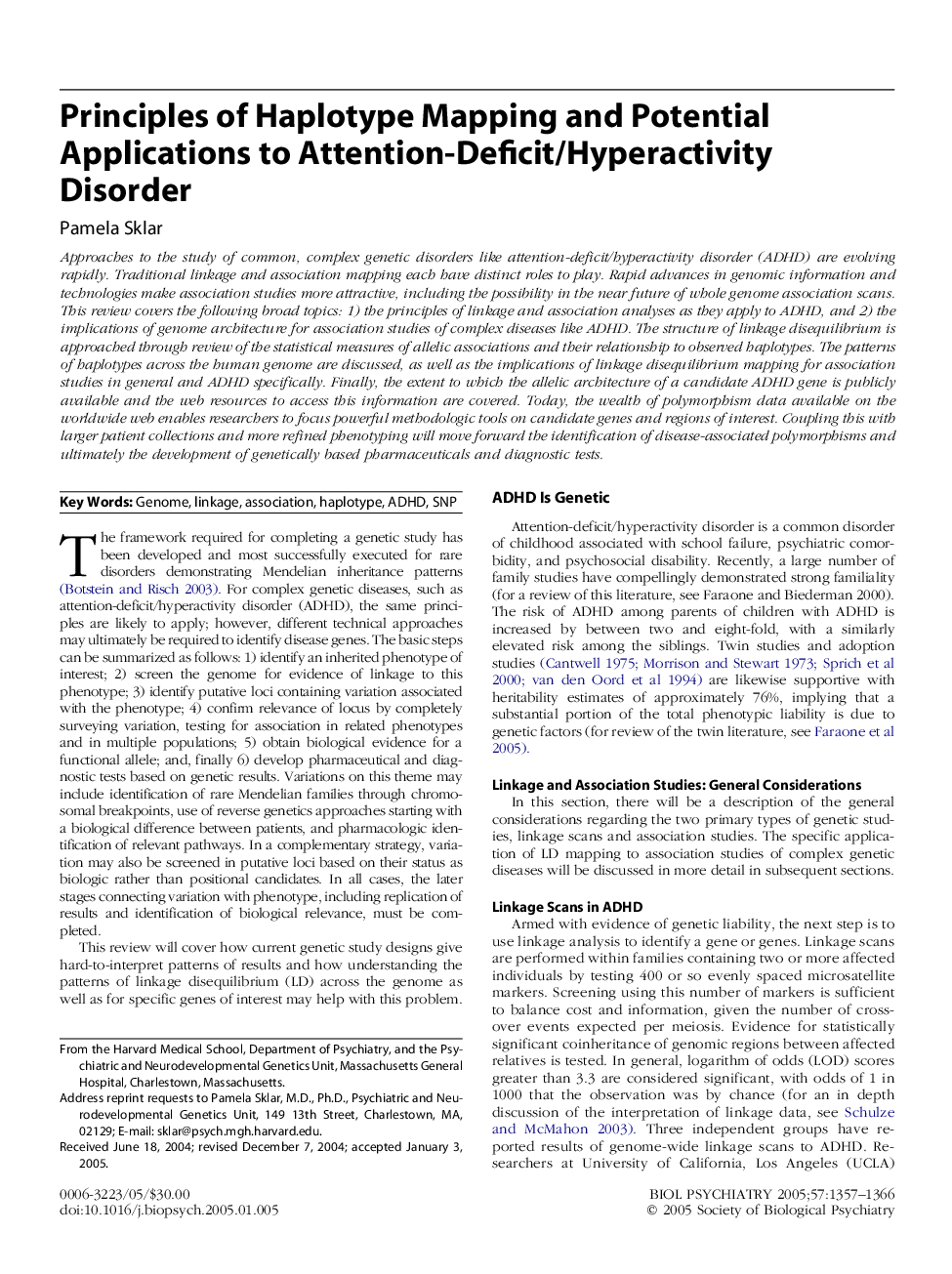| کد مقاله | کد نشریه | سال انتشار | مقاله انگلیسی | نسخه تمام متن |
|---|---|---|---|---|
| 9377563 | 1276646 | 2005 | 10 صفحه PDF | دانلود رایگان |
عنوان انگلیسی مقاله ISI
Principles of Haplotype Mapping and Potential Applications to Attention-Deficit/Hyperactivity Disorder
دانلود مقاله + سفارش ترجمه
دانلود مقاله ISI انگلیسی
رایگان برای ایرانیان
کلمات کلیدی
موضوعات مرتبط
علوم زیستی و بیوفناوری
علم عصب شناسی
روانپزشکی بیولوژیکی
پیش نمایش صفحه اول مقاله

چکیده انگلیسی
Approaches to the study of common, complex genetic disorders like attention-deficit/hyperactivity disorder (ADHD) are evolving rapidly. Traditional linkage and association mapping each have distinct roles to play. Rapid advances in genomic information and technologies make association studies more attractive, including the possibility in the near future of whole genome association scans. This review covers the following broad topics: 1) the principles of linkage and association analyses as they apply to ADHD, and 2) the implications of genome architecture for association studies of complex diseases like ADHD. The structure of linkage disequilibrium is approached through review of the statistical measures of allelic associations and their relationship to observed haplotypes. The patterns of haplotypes across the human genome are discussed, as well as the implications of linkage disequilibrium mapping for association studies in general and ADHD specifically. Finally, the extent to which the allelic architecture of a candidate ADHD gene is publicly available and the web resources to access this information are covered. Today, the wealth of polymorphism data available on the worldwide web enables researchers to focus powerful methodologic tools on candidate genes and regions of interest. Coupling this with larger patient collections and more refined phenotyping will move forward the identification of disease-associated polymorphisms and ultimately the development of genetically based pharmaceuticals and diagnostic tests.
ناشر
Database: Elsevier - ScienceDirect (ساینس دایرکت)
Journal: Biological Psychiatry - Volume 57, Issue 11, 1 June 2005, Pages 1357-1366
Journal: Biological Psychiatry - Volume 57, Issue 11, 1 June 2005, Pages 1357-1366
نویسندگان
Pamela Sklar,